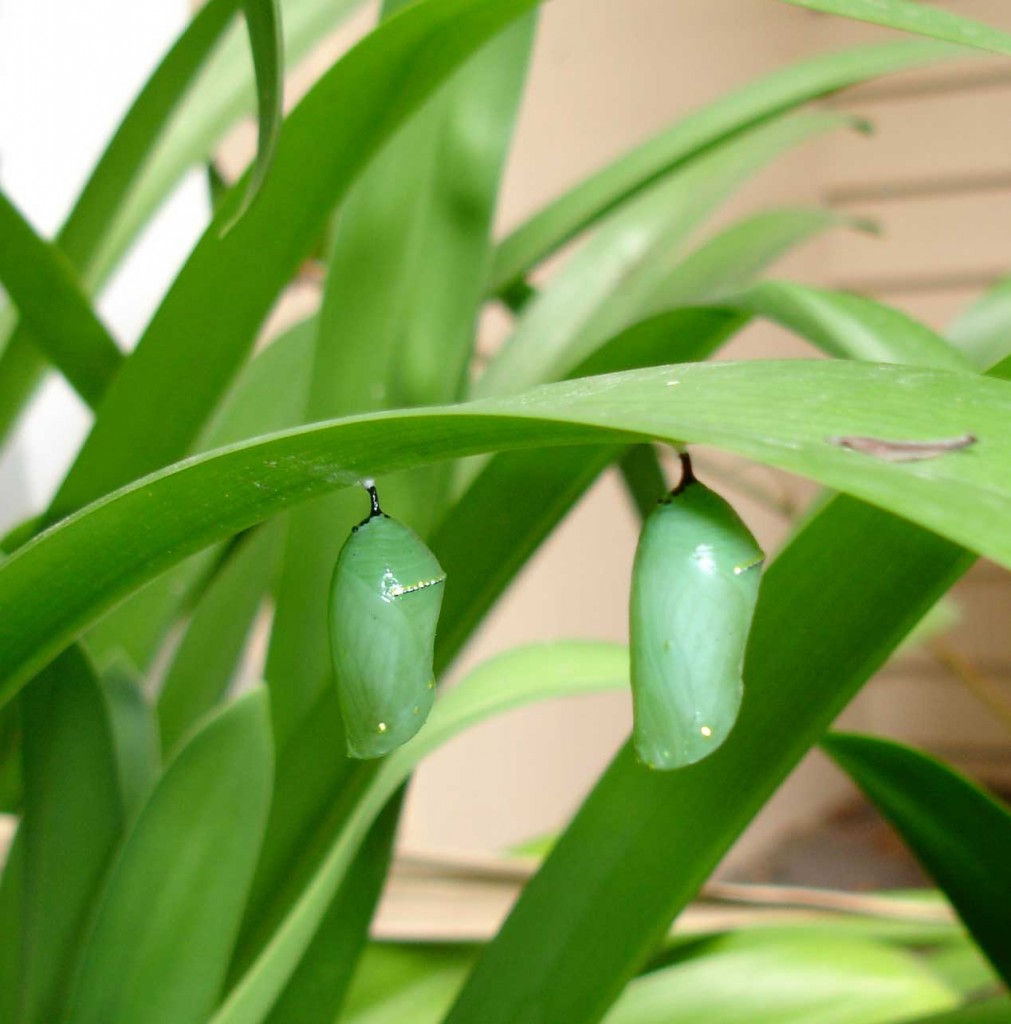A Southern Hemisphere Lent photographic reflection in my garden (part 4)

The caterpillar has stopped eating and found somewhere safe (as a pupa it is incredibly vulnerable). It has become very still and secreted a much thicker and stronger pupal skin. It produces this inside its old larval skin. It has then broken out of the old larval skin (see videos on reflection 3). You see the remains of the caterpillar skin by the pupa. Now a lot of the caterpillar’s old body dies. It is attacked by the same sort of juices the caterpillar used in its earlier life to digest its food. In a sense the caterpillar digests itself from the inside out (histolysis). Special formative cells, which have played no part in the insects larval life, have stayed hidden or protected during this partial death. Each of these groups of cells is called an ‘imaginal bud’ or a ‘histoblast’. These histoblasts supervise the building of a new body out of the soup that the insect’s digestive juices have made of the old larval body. They do this using the same biochemical processes that all insects use to turn their food into part of their bodies. This rebuilding process is called ‘histogenesis’.
Click here for next reflection – Good Friday




These are some rather wonderful photographs; thank you for posting them on your blog for us all to see. I’m anxious to find out what happens to the tiny mite at the end of the series!